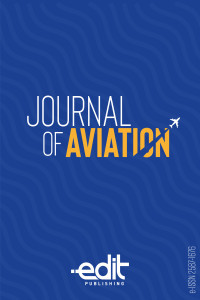A Framework for Airworthiness Certification of Autonomous Systems Within United States Naval Aviation
A Framework for Airworthiness Certification of Autonomous Systems Within United States Naval Aviation
A need has been identified to establish a strategy and framework for airworthiness certification of autonomous systems in Naval Aviation. The purpose of this research was to document a two-day virtual summit that was held in June 2021 to develop an initial strategy and framework for airworthiness certification of autonomous functionality in Naval Aviation air systems. The summit was designed to engage the airworthiness community to start the development of a strategy and framework for airworthiness certification of autonomous systems. The summit was attended by representatives from government, industry and academia. Following two full days of discussions, the group came to a consensus on a strategy and framework for airworthiness certification of airborne autonomous functions based on an example use case: an unmanned aircraft performing a drogue aerial refueling task. This paper summarizes the summit and it’s outcomes in an effort to stimulate the certification community to develop methods for certifying autonomous behaviour.
Keywords:
Airworthiness Certification Certification of Autonomous Systems, Military Unmanned Aviation,
___
- Advisory Circular 23.1309.E: System Safety Analysis and Assessment for Part 23 Airplanes. (2011). United States Department of Transportation: Federal Aviation Administration. Air Force Instruction 62–601: USAF Airworthiness. (2010). Secretary of the Air Force. Air Force Policy Directive 62–6: USAF Airworthiness. (2019). Secretary of the Air Force. Army Regulation 70–62: Airworthiness of Aircraft Systems. (2016). Department of the Army. Artificial Intelligence Roadmap 1.0. (2020). European Union Aviation Safety Agency. ASTM International: F3060-20 Standard Terminology for Aircraft. (2020). ASTM International, Conshohocken, PA. ASTM International: F3269-17 Standard Practice Methods to Safely Bound Flight Behavior of Unmanned Aircraft Systems Containing Complex Functions. (2017). ASTM International.
- ASTM International: TR2-EB: Developmental Pillars of Increased Autonomy for Aircraft Systems. (2019). ASTM International.
- Autonomy Design and Operations in Aviation: Terminology and Requirements Framework. (2019). ASTM International.
- Certification Specifications for Large Aeroplanes CS-25 Software Considerations in Airborne Systems and Equipment Certification. (2011). RTCA Document DO-178C.
- Certification Specifications for Large Airplanes CS-25. (2007). European Union Aviation Safety Agency.
- Concepts of Design Assurance for Neural Networks (CoDANN). (2020). European Union Aviation Safety Agency.
- Concepts of Design Assurance for Neural Networks (CoDANN) II. (2021). European Union Aviation Safety Agency.
- Cook, S. P. (2017). An ASTM Standard for Bounding Behavior of Adaptive Algorithms for Unmanned Aircraft Operations (Invited). AIAA Information Systems-AIAA Infotech @ Aerospace.
- Department of Defense Directive 3009.09: Autonomy in Weapons Systems. (2017). United States Department of Defense.
- Department of Defense MIL-STD-882E: Department of Defense Standard Practice, System Safety. (2012). United States Department of Defense.
- EA-18G at the Pre-Contact Point Behind a KC-10 over Afghanistan. (2013). [Photograph]. In from the Private Collection of CDR Costello.
- EA-18G Completing the Aerial Refueling Task Over Washington State. (2011). [Photograph]. In from the Private Collection of CDR Costello.
- EASA Concept Paper: First Usable Guidance for Level 1 Machine Learning Applications. (2021). European Union Aviation Safety Agency.
- F/A-18F Preparing to Aerial Refuel Over Maryland. (2010). [Photograph]. In from the Private Collection of CDR Costello.
- Guidelines and Methods for Conducting the Safety Assessment Process on Civil Airborne Systems and Equipment. (1996). S-18 Aircraft and Sys Dev and Safety Assessment Committee.
- Guidelines for Development of Civil Aircraft and Systems. (2010). S-18 Aircraft and Sys Dev and Safety Assessment Committee.
- Joint Software Systems Safety Engineering Handbook. (2010). United States Department of Defense.
- MIL-HDBK-516C: Department of Defense Handbook, Airworthiness Certification Criteria. (2014). United States Department of Defense.
- Nagarajan, P., Kannan, S. K., Torens, C., Vukas, M. E., & Wilber, G. F. (2021). ASTM F3269 - An Industry Standard on Run Time Assurance for Aircraft Systems. AIAA Scitech 2021 Forum.
- NAVAIR Airworthiness and Cybersafe Process Manual, NAVAIR Manual M-13034.1. (2016). Naval Air Systems Command.
- NAVAIR Instruction 1304.1F: Airworthiness and Cybersecurity Safety Policies for Air Vehicles and Aircraft Systems. (2016). Naval Air Systems Command.
- Photo Release -- X-47B Unmanned Aircraft Demonstrates the First Autonomous Aerial Refueling. (2015). Northrop Grumman Newsroom. https://news.northropgrumman.com/news/releases/photo- release-x-47b-unmanned-aircraft-demonstrates-the-first-autonomous-aerial-refueling
- Schweikhard, K. (2006). NASA/DARPA Automatic Probe and Drogue Refueling Flight Test. SAE Guidance and Control Subcommittee Meeting.
- Skoog, M. A., Hook, L. R., & Ryan, W. (2020). Leveraging ASTM Industry Standard F3269-17 for Providing Safe Operations of a Highly Autonomous Aircraft. 2020 IEEE Aerospace Conference.
- Yayın Aralığı: Yılda 3 Sayı
- Başlangıç: 2017
- Yayıncı: Vedat Veli ÇAY
Sayıdaki Diğer Makaleler
Cash Management of Multinational Airlines: A Case Study on A Turkish Airline
Why Are Flight Psychologists Important to Flight Safety?
Bekir Alper YILDIRIM, Deniz ELBER BÖRÜ
A Profitability Analysis of Air Navigation Service Providers in European Zone: COVID-19 Crisis
Duygu TOPLU YAŞLIOĞLU, İbrahim Zeki AKYURT, Murat YAŞLIOĞLU, Teoman ERDAĞ
Is Gamification Important for Service Systems Non-Users? A Study on Airline Loyalty Programs
